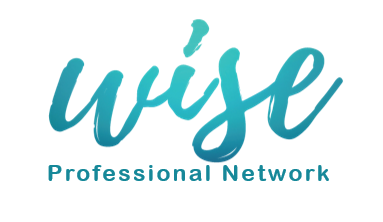Category Archives for Uncategorized
Future Engineers 2019
The Future Engineers Program built on last year’s momentum and expanded to a 50-student cohort in 2019. The five-day school holiday program was open to all girls in Western Australian high schools and set out to inspire them to pursue a STEM career in the marine, subsea, and oil and gas industries.
The program helped students define what engineering is, demonstrated the diverse careers an engineering degree can lead to, and showcased the industry through interactivepresentations at Engineers Australia and visits to offices and industrial sites.
Highlights of the 2019 program included officevisits to BHP Petroleum and the Woodside Robotics lab, and a site visit to Subcon to cast concrete structures for the Coogee Maritime Trail. Students also visited IFAP where they practised escaping from a smoke-filled room and strapped themselves into a lifeboat. Other highlightswere seeing ROVs in action at Oceaneering and NEXXIS, and an afternoon at the University of Western Australia to understand the different engineering pathways and the importance of science communication.
The 2019 program involved over 125 volunteers from 25 sponsoring companies and organisations. Through programs like Future Engineers, WISE hopes to improve gender diversity in the industry and work towards its long-term goal of gender parity.

Creating Mentally Healthy Workplaces
WISE had the pleasure of hosting Amy Douglas-Martens, Special Inspector of Mines – Mental health and wellbeing for WA with the Department of Mining Industry Regulation and Safety. With Amy’s wealth of experience, she simplified our responsibilities, our reach and our influence when it comes to developing and maintaining a mentally health workplace.

With huge amounts of media and information about mental health in the workplace, it’s very easy to become overwhelmed and as a result, ineffective. Amy gave us some really useful tools to enable us to be able to affect our workplaces and create mentally healthy environments.
Mental health and a mentally healthy workplace differ whereby mental health itself refers to individual experience, and a mentally healthy workplace is environmental. As workplace conditions are within our control, this is where our focus needs to be.
Like any risk management plan, while there is a need for intervention and recovery plans, the majority of our effort needs to be on prevention.. Amy reminded us that the risk management model can be applied to management of psychosocial hazards and risk factors in the same way that it is applied to physical hazards and risks.
Step 1 – Identification of psychosocial hazards and risk factors in the workplace (e.g. bullying, change, work demands, work place culture). This can be done via existing workplace data, direct observation or by surveying employees.
Step 2 – Risk Analysis and Assessment. Determine which work group are exposed to which hazards and assess the risk as you usually would; consequences and likelihood.
Step 3 – Put controls in place. Unfortunately, an Employee Assistance Program isn’t sufficient when creating a mentally healthy workplace. Risk controls need to be in accordance with the hierarchy of controls starting with the most effective methods. can involve elimination (eg recruitment & selection), substitution (eg coaching), engineering (eg job redesign), administrative (eg clear job description) and PPE (eg resilience training).
Step 4 – Communicate and consult. This can take the many forms from a standard prestart to non-verbal communication.
Step 5 – Monitor and review (analyse your workplace data). There’s an abundance of data already available to you, from HR, from OSH, EAPs and more which you can use to validate your controls.
To enhance all elements of the risk management process it is recommended that organisations invest in removal of stigma by strategically addressing its three components; knowledge, attitudes and behaviour.
All in all, the clear message that was delivered was that we need to focus on what is in our control – a mentally healthy workplace, rather than individual mental health. If we can reduce stigma strategically, implement our existing risk management knowledge whilst not being afraid to engage professionals when necessary, we can go a long way towards creating mentally healthy workplaces.
You can download the guidelines here.
International Women in Engineering Day, 23 June 2018
This Saturday is one to celebrate for WISE! Under the patronage of UNESCO, the Women’s Engineering Society are campaigning to raise the profile of women in engineering with the International Women in Engineering Day. This year’s theme is ‘Raising the Bar’.
Our WISE Wavemakers continue to raise the bar, you can check out their inspirational stories here. The Wavemaker Career Comic Book will soon be available and have been designed to encourage children aged 7-11 to find out more about our industry. Each story depicts a real female character using real scenarios and real subsea technologies. You can pre-order here, and at the same time you’ll be donating an additional copy to an Australian school library to help inspire Wavemakers of the future to continue ‘Raising the Bar’.

